What Animals Live In The Gobi Desert?
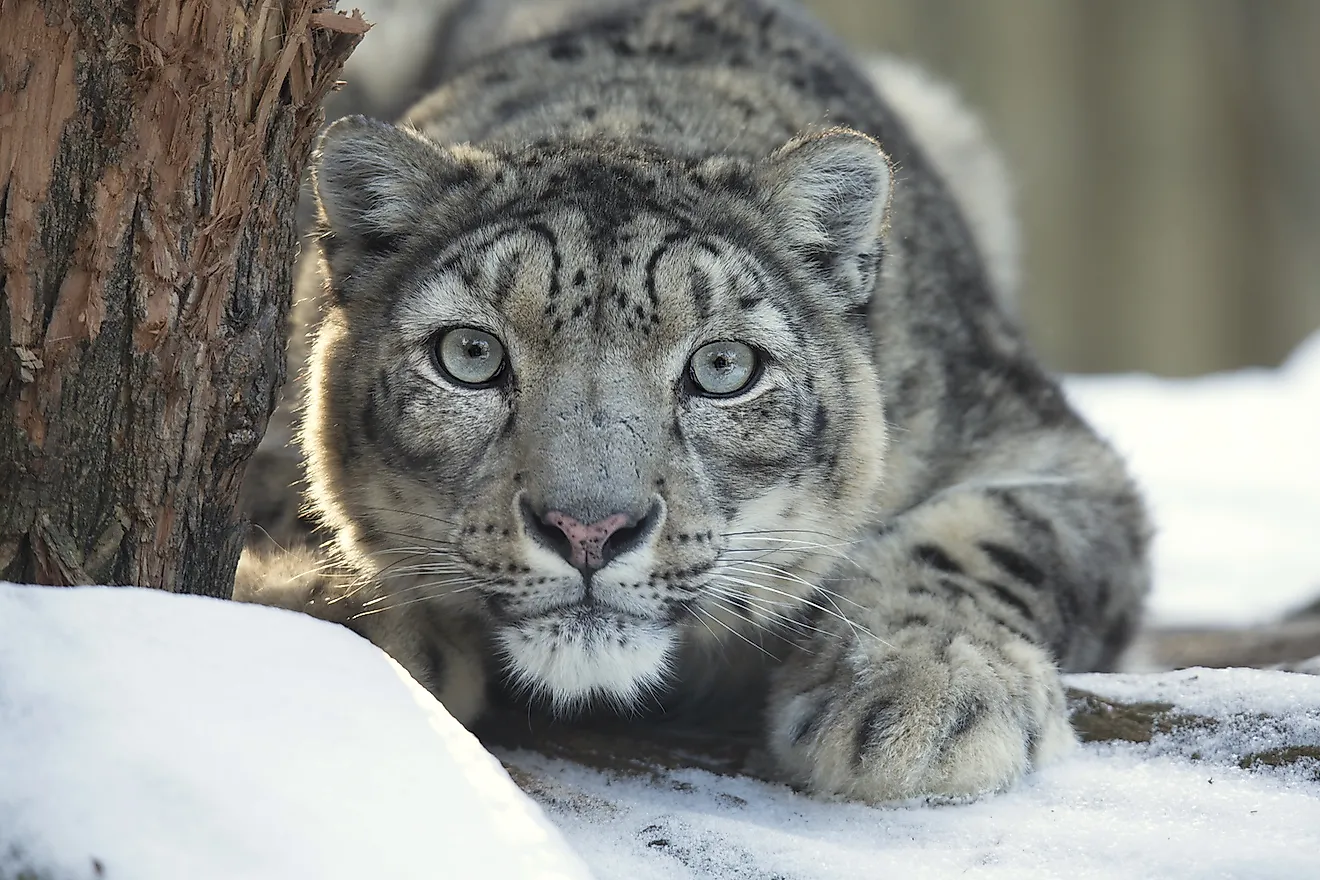
- Some of the iconic species living in the Gobi Desert are the snow leopard, black-tailed gazelle, Gobi viper, jerboa, Gobi bear, Gobi ibex, wild Bactrian camel, and others.
- The animals inhabiting the Gobi Desert are well-adapted to survive in the extreme desert climate.
- The Gobi Desert area was once home to dinosaurs and now hosts several dinosaur fossil sites of great value to paleontologists.
The Gobi Desert is a vast desert spanning parts of Southern Mongolia and Northern China. The word "Gobi" itself means “very large and dry” in the Mongolian language. Rocky outcrops and barren gravel plains constitute the landscape of the Gobi Desert. The summer temperatures of the desert rise as high as 40°C and winters might experience temperature falls as low as -40°C (-40°F). The Gobi Desert area was once home to dinosaurs and now hosts several dinosaur fossil sites of great value to paleontologists.
However, although the Gobi Desert is the largest desert in Asia, occupying an area of 1,300,000 square km, and has a harsh climate, it still hosts a significant diversity of species. The animals inhabiting the Gobi Desert are well-adapted to survive in the extreme desert climate. Some of the iconic species living in the Gobi Desert are the snow leopard, black-tailed gazelle, Gobi viper, jerboa, Gobi bear, Gobi ibex, wild Bactrian camel, and more. Here we list the animals living in the Gobi Desert.
10. Jerboa -
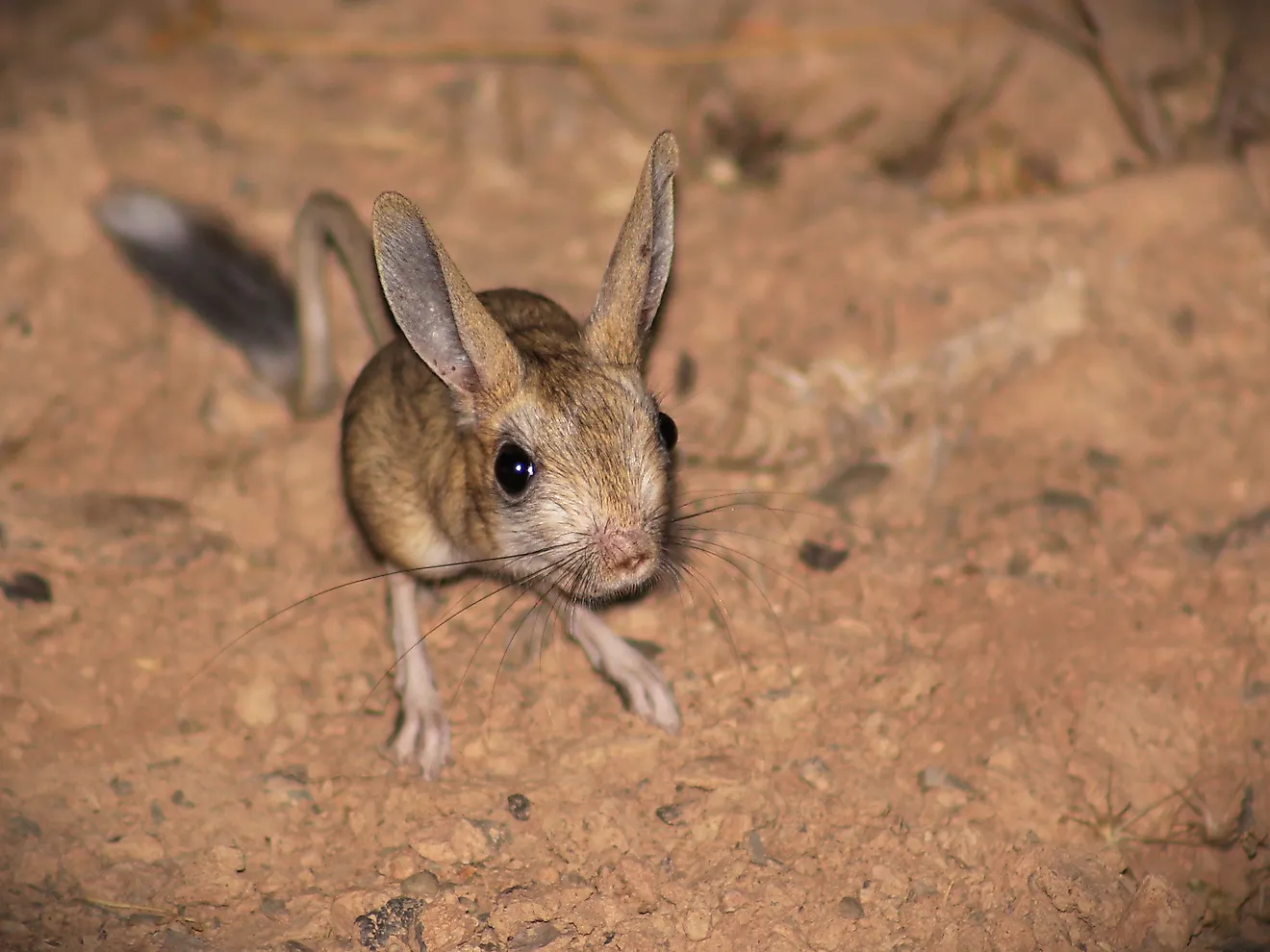
The jerboas are hopping desert rodents that live throughout parts of Northern Africa and Asia, and are also found in the Gobi Desert. The jerboa prefers to inhabit hot desert habitats. These animals are fast runners and can run when chased at up to 24 km per hour. Jerboas also possess a strong sense of hearing. These animals eat plants, beetles, insects, etc.
9. Gobi Pit Viper -
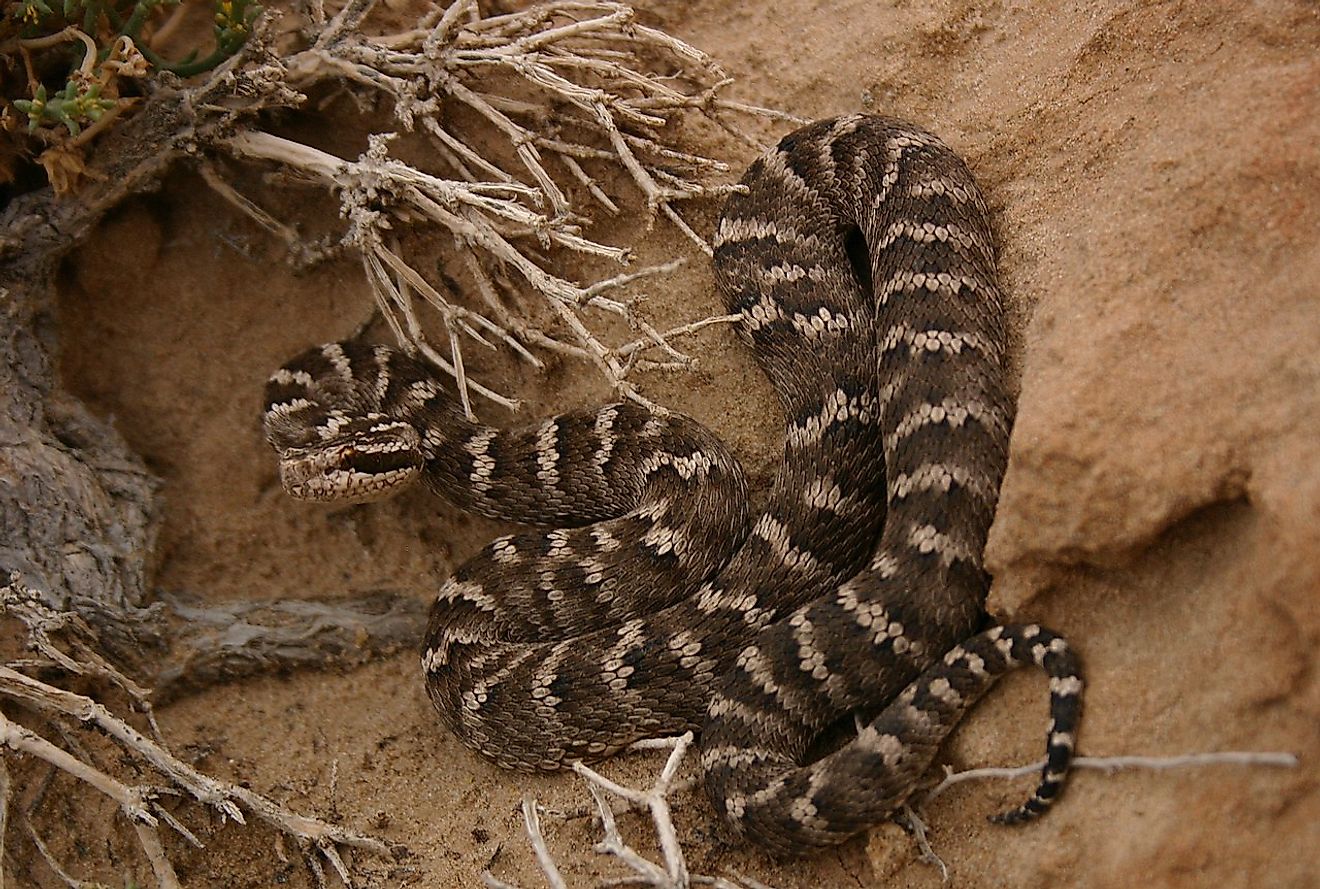
The Gobi pit viper (G. i. stejnegeri) is a venomous subspecies of the Central Asian pit viper Gloydius intermedius. The Gobi pit viper can be sighted at the edges of the Gobi Desert. The range of this snake stretches from the southeastern parts of Inner Mongolia into China.
8. Wild Bactrian Camel -
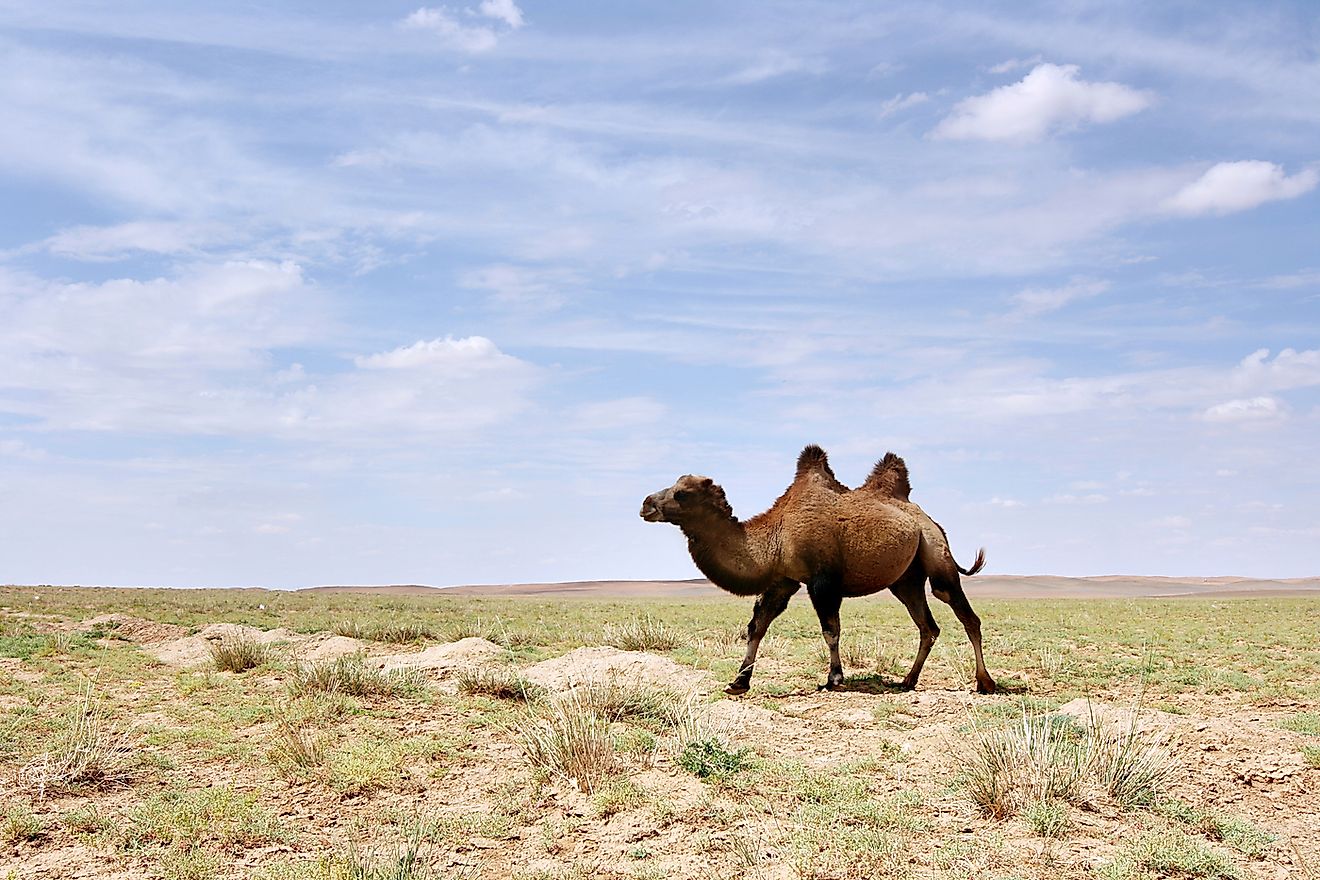
Another iconic animal of the Gobi Desert is the wild Bactrian camel (Camelus ferus). These camels are large, even-toed ungulates which live in the central Asian steppes and are characterized by a double hump. These camels were thought to have descended from the domestic camels that escaped to establish feral populations. However, recent scientific research has suggested that wild Bactrian camels diverged as a separate species long before domestication. Today, these wild animals have a very restricted range in the wild, remote parts of the Gobi and Taklamakan Deserts. These camels wander for long distances in groups of 2 to 15 members or even more. The wild Bactrian camels are a critically endangered species today, and only about 1,400 individuals remain in the wild today. Hunting, poaching, wolf attacks, hybridization with domestic camels are the factors catalyzing the disappearance of the Bactrian camels.
7. Golden Eagle -
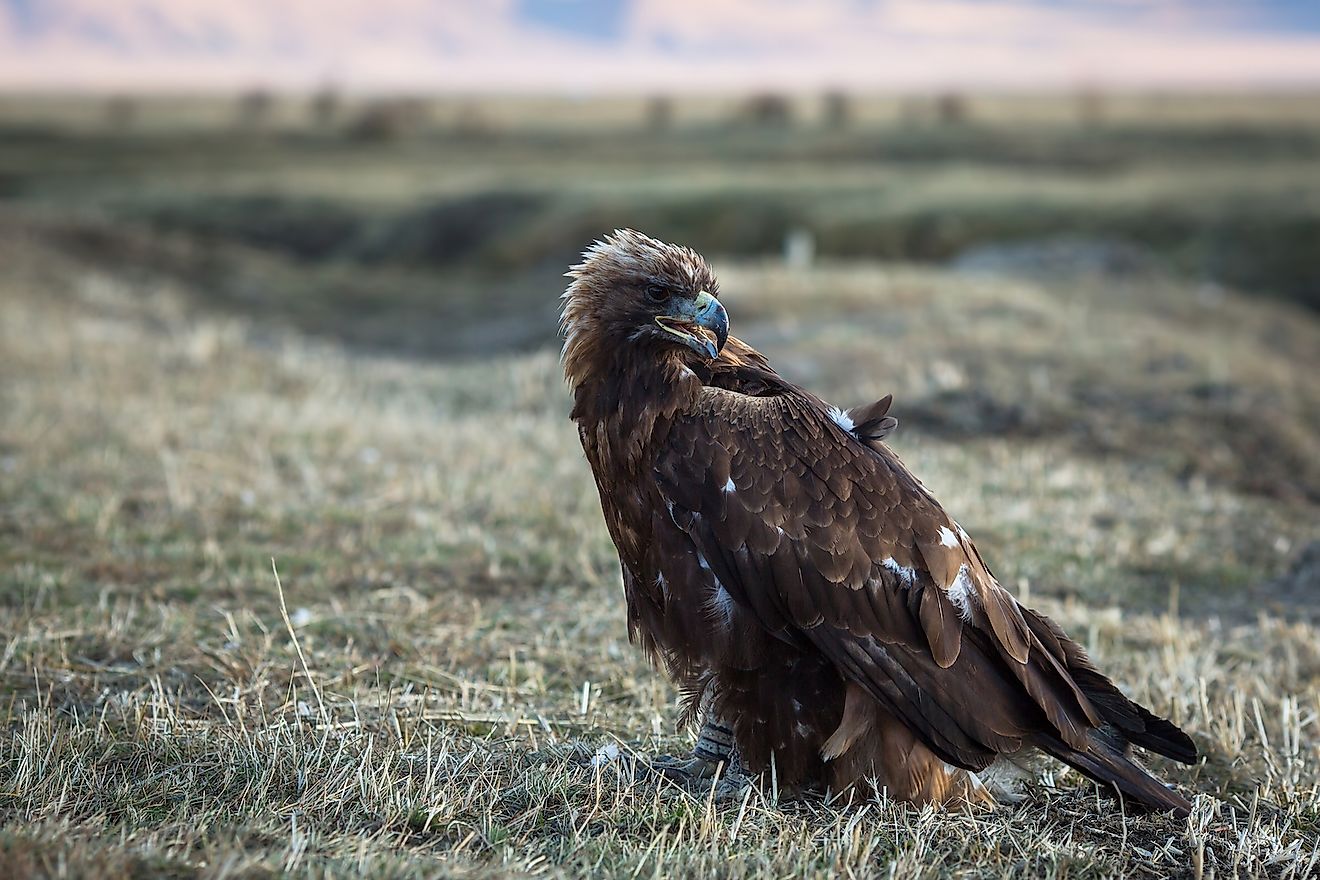
The golden eagle (Aquila chrysaetos) is one of the most notable birds that can be viewed soaring in the sky above the Gobi Desert. The bird of prey build nests at high altitudes in the desert, and feeds on the rodents and other small mammals, reptiles, etc., living in the desert.
6. Mongolian Wild Ass -
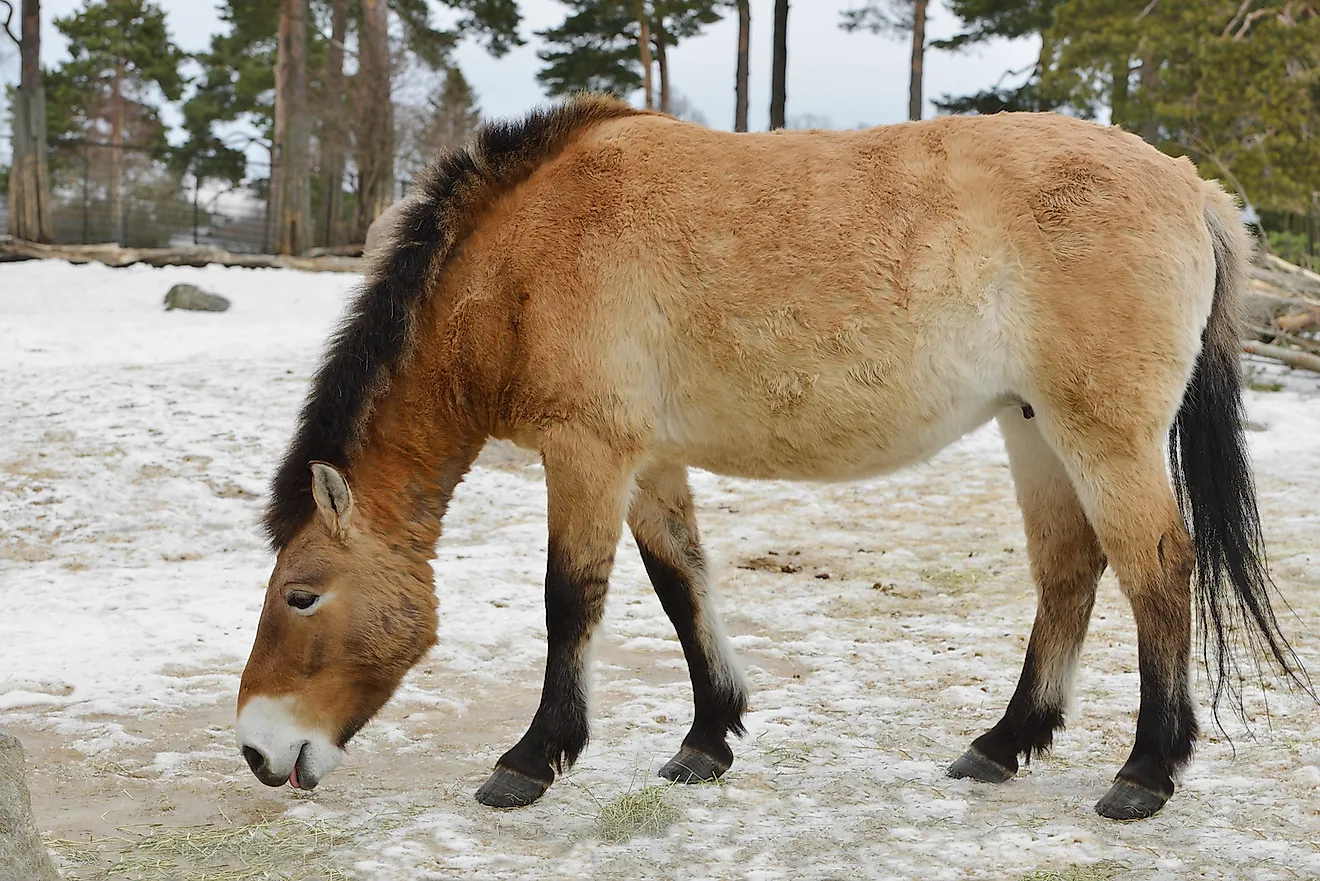
The Mongolian wild ass (Equus hemionus hemionus) is found in northern China and Mongolia. The animal is a herbivore which can live on the sparse vegetation found in the arid habitat of the Gobi Desert. The Mongolian wild ass was recorded as a Near Threatened species by the IUCN in 2015, and about 23,000 mature individuals are estimated to live in the wild. Poaching and competition for food offered by grazing livestock are the two biggest threats to the Mongolian wild ass population.
5. Gobi Ibex -
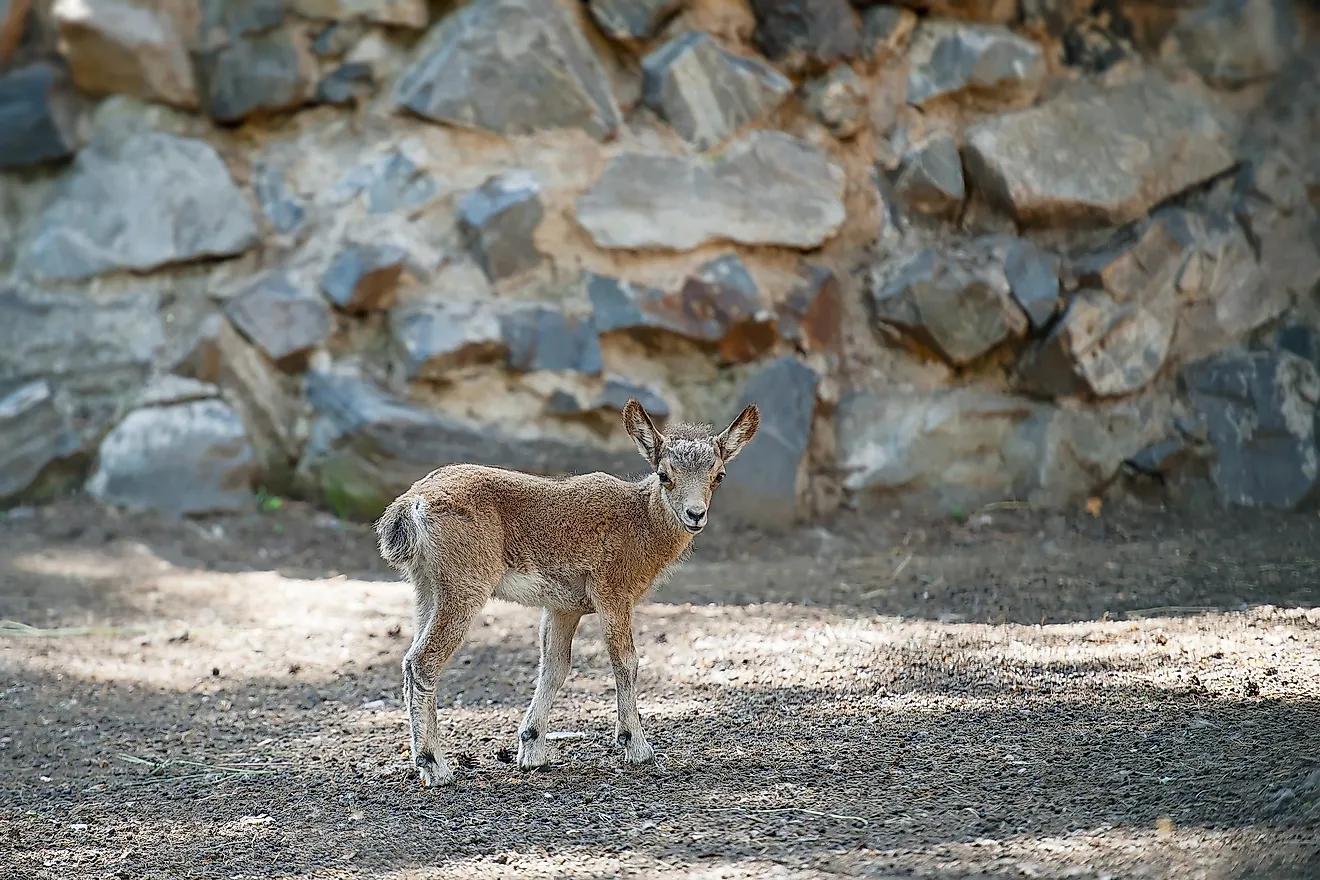
The Gobi ibex is a species of wild goat that lives in the mountains of the Gobi Desert in Mongolia’s south and southwest region. The length of the ibex varies between 4.3 feet and 5.5 feet, and the body color is light brown. Sadly, the animal is hunted for pleasure and organized hunts of the Gobi ibex are arranged by the trophy hunting industry operating in the region.
4. Marbled Polecat -
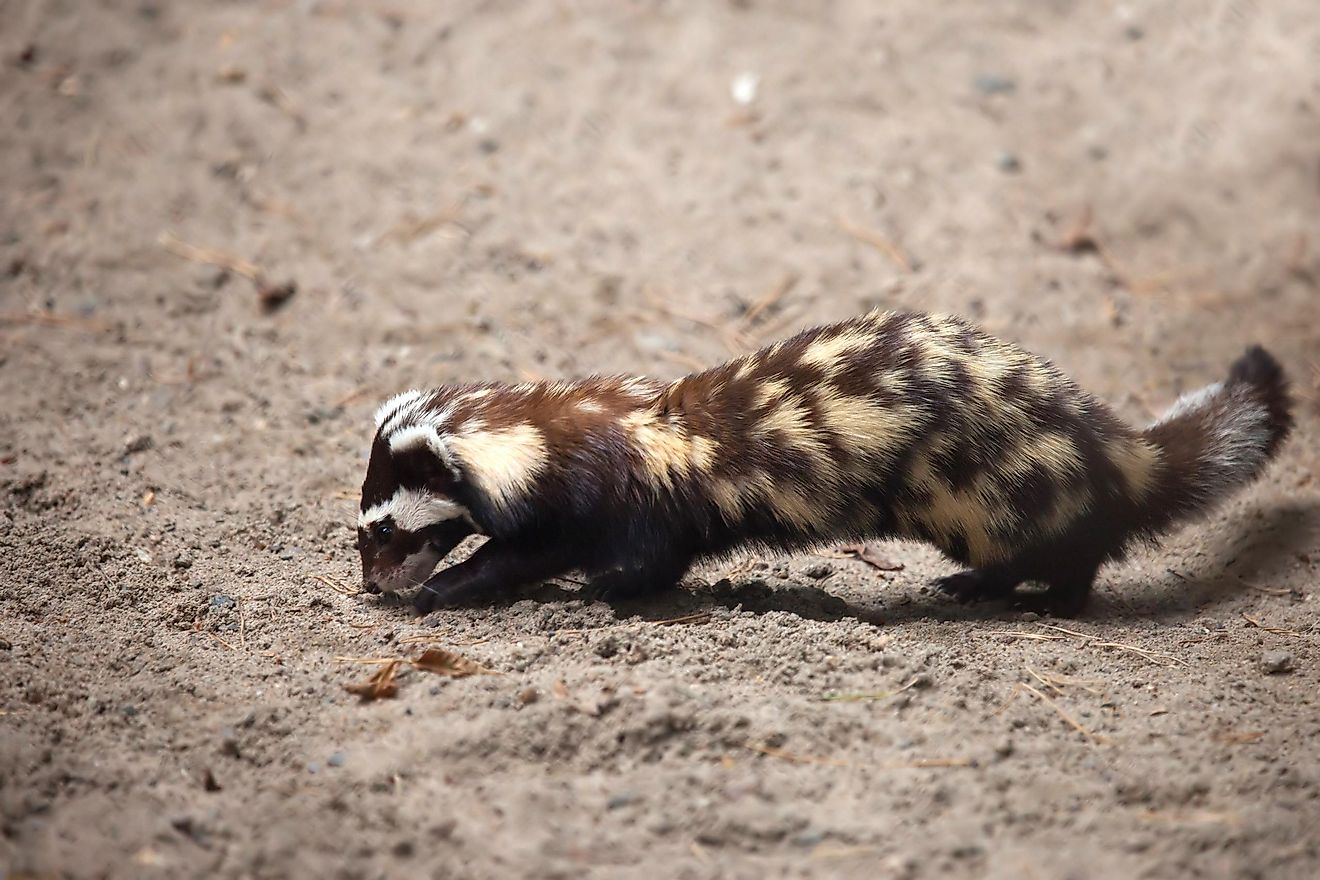
The marbled polecat (Vormela peregusna) is a small mammal that is found in the arid, semi-arid, and grassland habitat of western China and southeastern Europe including the Gobi Desert. The cats can easily adapt themselves to a wide variety of habitats and can also survive in open deserts. The animals feed on rodents, insects, and birds in their habitat. The marbled polecat is classified as a vulnerable species due to a 30% reduction in the population of this species because of a declining prey base and habitat destruction.
3. Black-Tailed Gazelle -
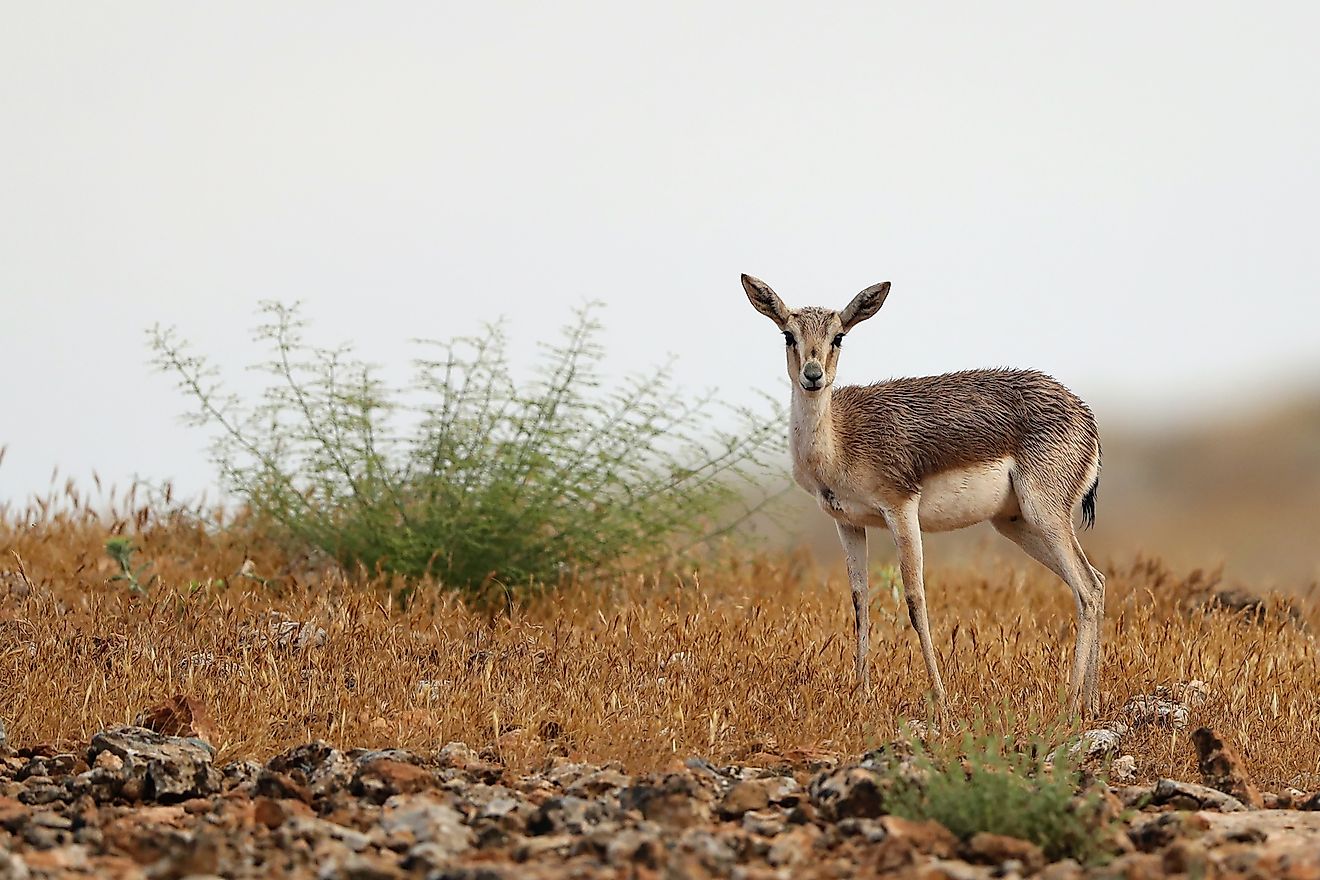
The black-tailed gazelle or the goitered gazelle (Gazella subgutturosa) is an animal living in the Gobi Desert and is also found in parts of Azerbaijan, Georgia, Iraq, Iran, Pakistan, Afghanistan, and Turkey. Within its range, the goitered gazelle inhabits limestone plateau and gravel plains and migrate seasonally in search of food.
2. Gobi Bear -
The Gobi bear (Ursus arctos gobiensis) is a brown bear subspecies that is found in the Gobi Desert region of Mongolia. It is the rarest subspecies of bear and is listed as Critically Endangered. Gobi bears are omnivorous in nature and consume roots, berries, plants, and occasionally large mammals. Adult Gobi bears weigh around 96.0 to 138.0 kg and females weigh around 51.0 to 78.0 kg.
1. Snow Leopard -
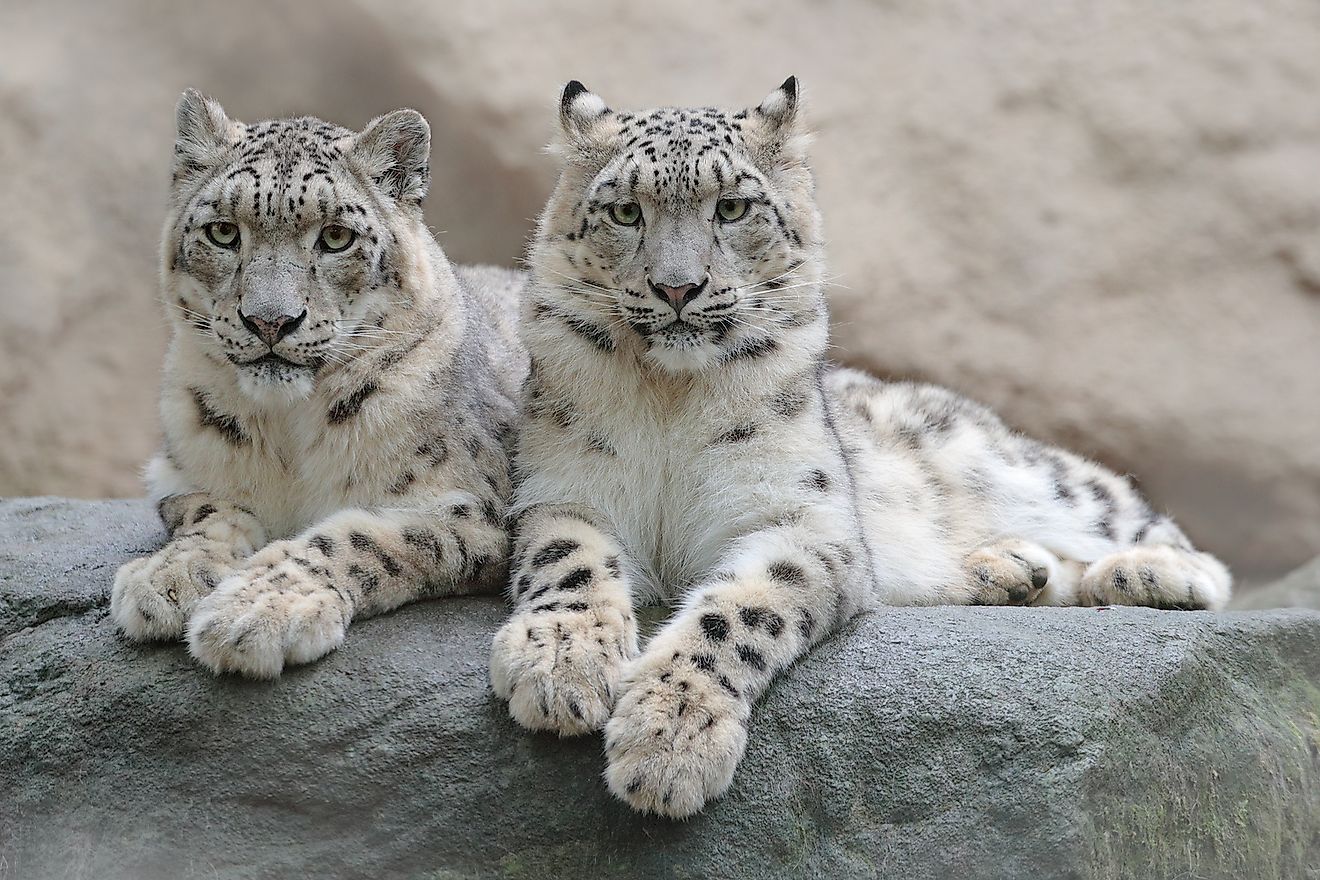
Snow Leopard (Panthera uncia) is the top predator in the Gobi Desert. The animal is distributed in many parts of Central and South Asia and is also present in the Gobi Desert’s mountain ranges such as the Tian Shan range. The Gobi ibex serves as the main prey of the snow leopard. Male snow leopards can attain a length of 1.3 meters and weigh about 57 kg. Female leopards are, however, relatively smaller in size. The animals are highly endangered, and fewer than 500 are left in the Gobi Desert. Hunting by humans and human-animal conflict has triggered the population decline of these leopards.











